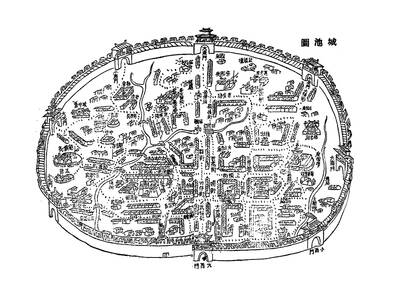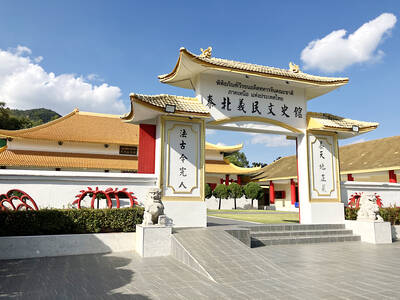With one foot resting on the body of an antique, two-stringed Chinese violin and the other foot tapping out a rhythm, Ha Thi Cau closes her eyes in concentration and plays a few notes of a song, but struggles to remember the words.
Her memory lapse is not that surprising. At age 78, Cau is thought to be the very last of Vietnam's performers of hat xam, a style of music usually performed by blind musicians with origins in a 13th century legend. She has been singing and playing hat xam for nearly seven decades.
Cau is not blind, but both her parents and husband were. She started traveling and performing with her family in 1936 at the age of 10, meeting her husband when she was 12 and marrying him when she was just 16.
"My parents sang. I sang, my mother played the nhi (two-stringed Chinese violin) and my father played the dan bao (monochord). I went everywhere, from north to south. I followed my parents wherever they went," Cau said recently in her tiny two-roomed house in Quang Phuc, a picturesque rural village about 150km south of Hanoi.
Hat xam music had its heyday in the northern half of Vietnam in the 1920s and 1930s, according to traditional music expert Professor Bui Trong Hien, from Hanoi's Institute of Culture and Art.
At that time, there were four groups of hat xam musicians in Hanoi alone, all performing around the picture-perfect Hoan Kiem lake in the center of the city.
Troupes of performers also wandered and performed in all the provinces, from those on the northern border with China down to the center of Vietnam.
"Hat xam songs always kept up with social issues," Professor Hien said recently. "If there was something discussed in society they could make up songs about it, turning the stories into poetry and singing."
In addition to improvised pieces poking fun at authority, there were around 10 traditional themes for songs. Musicians could even be hired by a suitor to go and musically woo a prospective partner.
Subject matter for the songs Cau performed on a recent weekend included the difficulty of life as a woman, filial piety, the problem of lazy sons-in-law and gold-digging women.
Sprightly does not begin to describe the diminutive Cau. With semi-bawdy interludes between songs, she has her small audience guffawing one minute and nearly moved to tears the next with her jokes and songs.
Although she looks fragile and slightly decrepit, her voice is strong and clear, and her violin and drums playing is spot-on.
When she married at 16, she became the 18th wife of Nguyen Van Mau, a famous, blind hat xam performer who had the reputation of a charmer of women.
"My husband was the best xam singer, he was also very handsome," Cau recalled. "I married him when I was 16 and he was 49. There is no way a 16-year-old girl would normally marry a 49-year-old man, I must have been bewitched."
She never met any of her husband's first 15 wives. But at one stage, she played Chinese violin in a group while wife number 16 played drums and her husband played the monochord, an unusual arrangement that Cau said she took in stride.
"We even used to share a bed. What did it matter? He was blind," she said, before bursting into throaty laughter that sent small steams of red betel juice coursing down her wrinkled cheeks.
The origins of hat xam stretches back 700 years to the Tran dynasty of imperial Vietnam, according to Professor Hien.
A king in the 13th century had two sons, so the legend goes, one good and one bad. He sent both of them into a forest to look for a gem stone, promising the throne to whomever found it. The good prince found it but his brother stole the stone and blinded his sibling.
In the forest, the blind prince made a primitive monochord and began to wander from village to village singing for money. The king eventually heard about this blind singer and brought him back to take his rightful place on the throne.
"Hat xam singers consider the good prince to be their ancestor and the founder of hat xam ," Hien said.
Widespread and devastating famine in northern Vietnam at the end of World War II was the beginning of the end for hat xam .
The communist victory over French colonial forces in 1954, and the creation of the Democratic Republic of Vietnam was the final nail in the coffin for the wandering blind musicians.
"After 1954 the government gathered up hat xam singers -- most of whom were blind -- and created other jobs for them. They considered hat xam singers uncivilized and were trying to help them," Hien said.
The half dozen medals and certificates on the wall of Cau's small house in Ninh Binh attest to the fact that the government has recognized her unique talent in recent years.
The only thing is, when Cau dies, her music goes with her.

May 26 to June 1 When the Qing Dynasty first took control over many parts of Taiwan in 1684, it roughly continued the Kingdom of Tungning’s administrative borders (see below), setting up one prefecture and three counties. The actual area of control covered today’s Chiayi, Tainan and Kaohsiung. The administrative center was in Taiwan Prefecture, in today’s Tainan. But as Han settlement expanded and due to rebellions and other international incidents, the administrative units became more complex. By the time Taiwan became a province of the Qing in 1887, there were three prefectures, eleven counties, three subprefectures and one directly-administered prefecture, with

It’s an enormous dome of colorful glass, something between the Sistine Chapel and a Marc Chagall fresco. And yet, it’s just a subway station. Formosa Boulevard is the heart of Kaohsiung’s mass transit system. In metro terms, it’s modest: the only transfer station in a network with just two lines. But it’s a landmark nonetheless: a civic space that serves as much more than a point of transit. On a hot Sunday, the corridors and vast halls are filled with a market selling everything from second-hand clothes to toys and house decorations. It’s just one of the many events the station hosts,

Among Thailand’s Chinese Nationalist Party (KMT) villages, a certain rivalry exists between Arunothai, the largest of these villages, and Mae Salong, which is currently the most prosperous. Historically, the rivalry stems from a split in KMT military factions in the early 1960s, which divided command and opium territories after Chiang Kai-shek (蔣介石) cut off open support in 1961 due to international pressure (see part two, “The KMT opium lords of the Golden Triangle,” on May 20). But today this rivalry manifests as a different kind of split, with Arunothai leading a pro-China faction and Mae Salong staunchly aligned to Taiwan.

Two moves show Taichung Mayor Lu Shiow-yen (盧秀燕) is gunning for Chinese Nationalist Party (KMT) party chair and the 2028 presidential election. Technically, these are not yet “officially” official, but by the rules of Taiwan politics, she is now on the dance floor. Earlier this month Lu confirmed in an interview in Japan’s Nikkei that she was considering running for KMT chair. This is not new news, but according to reports from her camp she previously was still considering the case for and against running. By choosing a respected, international news outlet, she declared it to the world. While the outside world